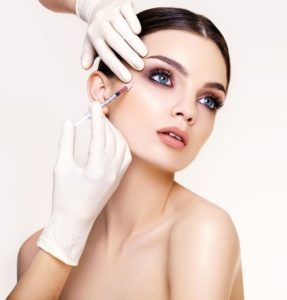What is Botox?
A Botox procedure is a simple, non-surgical treatment that uses a purified toxin called Botulinum. This is injected underneath the skin in order to smooth out lines and wrinkles appearing on the face. The amount of Botulinum toxin used in cosmetic surgery is so small that no negative reaction is likely to occur. In the past, people have undergone a Botox procedure for a variety of other conditions but over the last 20 years it has become a cheap and quick way to prolong the signs of ageing.
Because of the increasing popularity of the procedure, common myths have formed over the years:
 Botox Myths 1: Botox injections are toxic to the body
Botox Myths 1: Botox injections are toxic to the body
Botox is a purified protein derived from the Botulinum toxin, the same as the one that causes a serious form of food poisoning. The toxin affects the central nervous system but because the concentration of the substance is so low it is incapable of spreading its effects outside of the injected area.
Botox Myths 2: Botox will result in the loss of facial expression
The intention of a Botox cosmetic procedure is to enhance the way the patient looks, not change it. When an experienced physician carries out the procedure, the patient will still be able to smile, frown and animate. Botox relaxes the muscles in the injected area meaning the other elements of facial expressions remain active.
Botox Myths 3: Patients develop an addiction to Botox
It is proven that the procedure does not result in any physiological addiction. Similarly the effects of a Botox procedure are not permanent.
Botox Myths 4: Botox injections are painful
During the procedure, Botox is injected with a very small needle into the desired area. As previously stated, only a small amount of liquid is used therefore the pain is practically non-existent. Patients compare the feeling to that of a mosquito bite.
Post procedure, there is usually no discomfort although the patient may experience a slight sensitivity in the area for the next 12-24 hours – this settles on its own in due course.
Botox Myths 5: Botox injections can be administered everywhere
Botox should only be carried out in an appropriate medical setting. It is a technique-sensitive procedure therefore a qualified, skilled and experienced physician must perform it. Christie Brinkley revealed she’s only gotten Botox once. “I had a bad experience with it and I never did it again,” she said.
Botox Myths 6: Botox is expensive
Botox is much cheaper and quicker than a face-lift, hence it’s increasing popularity. Furthermore, the procedure takes such little time to administer allowing the patient to receive a treatment on their lunch break.
Botox Myths 7: There are creams that are better than Botox
There is no scientific evidence that supports that creams work better than a Botox procedure – the difference being that creams are unable to work below the surface of the skin. Botox works by relaxing the muscles that cause lines and wrinkles to form, creams are unable to work in the same way.
Despite these common myths, in 2018 almost 7.5 million procedures were performed. In short, Botox continues to be a one 10-minute treatment that improves moderate to severe dynamic wrinkles that can last up to 4 months.


 Botox Myths 1: Botox injections are toxic to the body
Botox Myths 1: Botox injections are toxic to the body